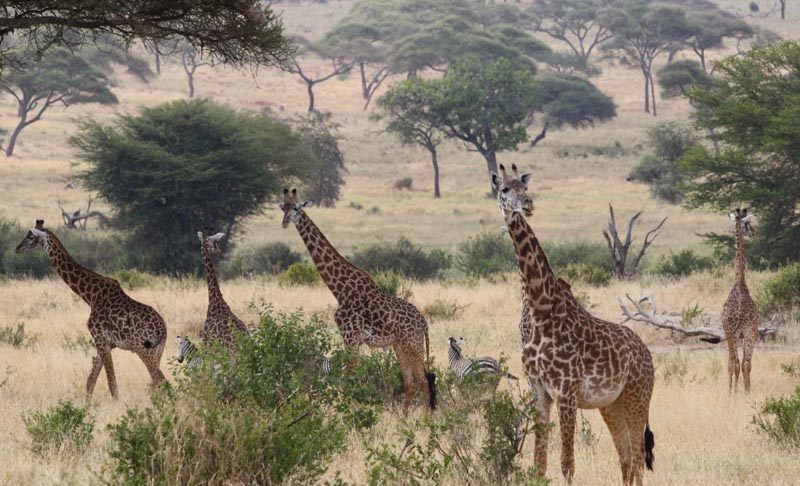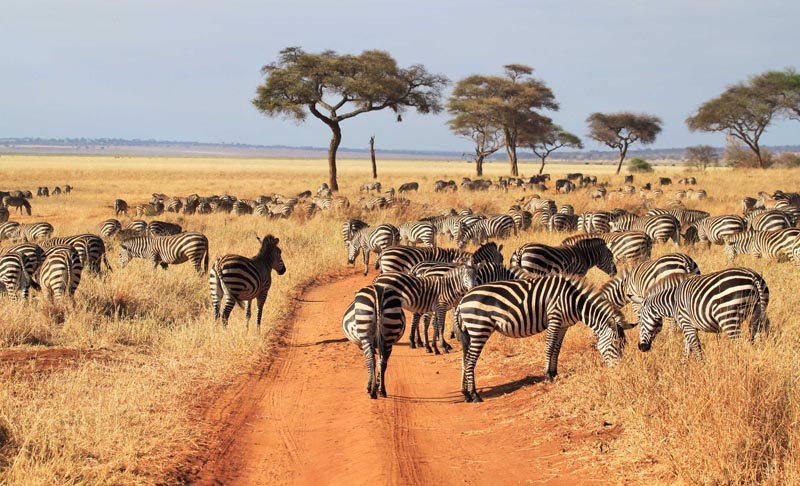Tarangire National Park
Tarangire National Park: The Land of Giants
Tarangire National Park is one of Tanzania’s most underrated safari destinations, offering a wild and authentic safari experience away from the crowds. Located about 120 km (75 miles) southwest of Arusha, the park covers 2,850 square kilometers (1,100 square miles) and is famous for its massive elephant herds, iconic baobab trees, and diverse wildlife. Tarangire is part of the northern safari circuit, making it a perfect addition to a Serengeti or Ngorongoro safari.


Wildlife and the Famous Elephant Herds
Tarangire is best known for its large elephant population, with over 3,000 elephants roaming the park, especially during the dry season. It is one of the best places in Africa to see large elephant herds up close, with some groups numbering over 300 elephants.
Apart from elephants, Tarangire is home to an impressive variety of wildlife, including:
Lions – Often seen resting under the shade of trees or hunting prey.
Leopards – Though elusive, they can sometimes be spotted in the trees.
Cheetahs – Occasionally seen in the open plains.
Buffaloes, Zebras, and Wildebeest – Commonly seen grazing in the park.
Giraffes – Towering over the landscape, feeding on acacia trees.
Wild Dogs and Hyenas – Sometimes spotted in the more remote areas.
Rare Antelope Species – Tarangire is home to lesser-known species like the fringe-eared oryx and gerenuk, which are difficult to find elsewhere in Tanzania.


A Birdwatcher’s Paradise
With over 550 bird species, Tarangire is one of the best birding destinations in Tanzania. The Tarangire River and surrounding wetlands attract migratory birds, raptors, and waterbirds, including:
Lilac-breasted roller
Kori bustard (the heaviest flying bird)
Yellow-collared lovebirds
Ostriches
Hornbills, eagles, and vultures
The Famous Baobab Trees and Unique Landscapes
Tarangire’s landscape is unlike any other in Tanzania, characterized by ancient baobab trees, seasonal swamps, and the winding Tarangire River, which serves as the park’s lifeline during the dry season. The massive baobab trees, some of which are over 1,000 years old, create a stunning backdrop for wildlife photography.
Best Time to Visit Tarangire National Park
The best time to visit depends on what you want to experience:
Dry Season (June to October) – The best time for wildlife viewing. As water sources dry up, animals gather around the Tarangire River, providing excellent game-viewing opportunities.
Wet Season (November to May) – The park is lush and green, with fewer tourists. This is the best time for birdwatching, as migratory species arrive.

